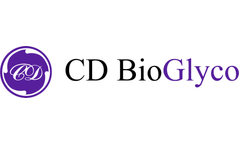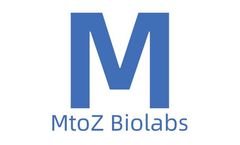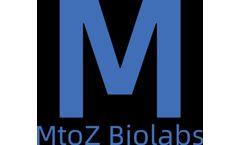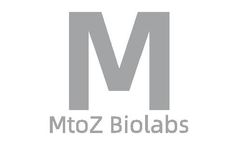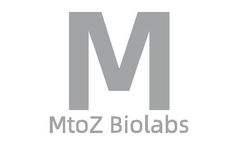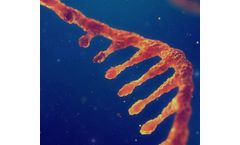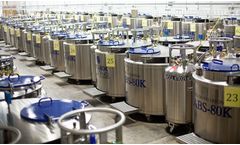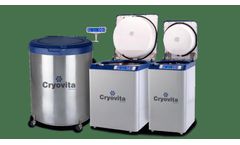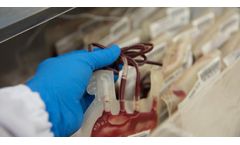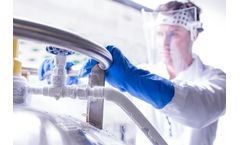Refine by
Biological Sample Articles & Analysis: Older
35 articles found
Glycobiology, the study of carbohydrates and their biological functions, relies heavily on the ability to analyze large-scale carbohydrate interactions. ...
One of the remarkable properties of cytokines is their multipotency; a single cytokine can act on multiple cell types, influencing various biological responses. Additionally, there is often overlap in the functions of different cytokines, meaning that two or more cytokines can produce similar biological effects. ...
Peptides are short chains of amino acids linked by peptide bonds and are crucial in many biological functions. While proteins, composed of longer chains, execute complex and diverse roles in biological systems, peptides often function as hormones, neurotransmitters, or enzymes, regulating various physiological processes. ...
Discover how matched tumor-normal sequencing can help clinical researchers detect the somatic origin of variants with certainty. In the era of precision oncology, it has become increasingly common for patients diagnosed with cancer to undergo tumor sequencing. Identifying the mutations that make up a tumor’s genomic landscape can help guide selection of targeted therapies and inform ...
Differentially expressed proteins refer to proteins that show significant changes in their expression levels in different biological samples or under different treatment conditions. Observing such differential expression is crucial for understanding cellular physiology and disease mechanisms. ...
These probes are specifically designed to target and bind to the genetic material within CAR-T cells, enabling researchers to accurately track and monitor their presence in biological samples. The high specificity and sensitivity of the CABR™ ISH probes make them invaluable in studying the localization, distribution, and persistence of CAR-T cells in ...
Among them, glycoproteins are an essential biomarker that plays a key role in many biological processes, including disease onset, progression, and treatment response. ...
These techniques can separate, identify, and quantify collagen and its hydrolysis products in the samples.Common methods for collagen content determination include:1. Sample PreparationCollagen is extracted from the sample and preprocessed by centrifugation, filtration, or using Solid Phase Extraction (SPE) to remove impurities and purify the collagen.2. ...
Protein Target Quantification aims to accurately measure the abundance of specific proteins in biological samples. It has the advantages of high throughput, accuracy, and reproducibility. Using early data from differential proteomics/transcriptomics/genomics analysis, this method has validated biomarkers in large biological ...
Metabolomics presents several challenges that must be addressed to ensure reliable and reproducible results: Sample Complexity: Biological samples used in metabolomics, such as blood, urine, tissues, or cells, are inherently complex. ...
Bile acid analysis involves the quantification and profiling of these compounds within biological samples such as blood, urine, or feces. By delving into the composition and concentration of bile acids, researchers and clinicians gain valuable insights into various aspects of health and disease. ...
When studying gene expression, researchers often compare gene expression profiles between different biological samples or experimental conditions, such as healthy and diseased tissues, treated and untreated cells, or different developmental stages. ...
When studying gene expression, researchers often compare expression profiles across different biological samples or experimental conditions, such as healthy and diseased tissues, treated and untreated cells, or different developmental stages. ...
A biorepository, or "biobank", is a specialized facility designed to store, archive, and distribute biological samples for research or clinical purposes. Biorepositories house biological samples, such as blood, plasma, urine, saliva, tissues, DNA, and organs, among other specimen types, collected from consenting individuals. ...
The cryogenic process is a method of freezing and storing samples that involves cooling the temperature of biological materials to stop normal cellular processes and prevent sample degradation for long-term storage. The cryogenic process and cryo storage are ideal solutions for the storage of biological samples ...
Declaration of conformity – Manufacturers must provide a declaration of conformity to confirm that their medical device meets the essential requirements set out in the MDD.SmartFreezer® EVOA fully automated cryogenic freezer, SmartFreezer EVO provides a safe, robotic solution for the storage and retrieval of biological sample vials in liquid nitrogen (vapour ...
The storage process also allows hospitals to ensure they have enough blood on hand to meet the needs of their patients when they need it most.Storage of blood in blood bank cold chain ensures blood storage conditions are at the required temperature and that blood samples are maintained at the correct temperature from the moment they are taken until they reach their final ...
This process stops the normal cell functions and holds the sample in suspended animation. When the time comes to thaw the sample, normal biological function resumes.Cryopreservation Process Steps The cryopreservation process can be broken down into 5 steps:Isolating material: When choosing material suitable for cryopreservation, certain ...
Viral metagenomics is the study of viruses in environmental and biological samples by utilizing next generation sequencing that generates very large data sets. ...
An RNA-seq experiment begins with extraction and enrichment of mRNA from biological samples. mRNA is then reverse transcribed into cDNA, like in the low-throughput qRT-PCR approach. cDNA is fragmented and adapters are added to the cDNA molecules to prepare a library which is amplified before sequencing. ...

